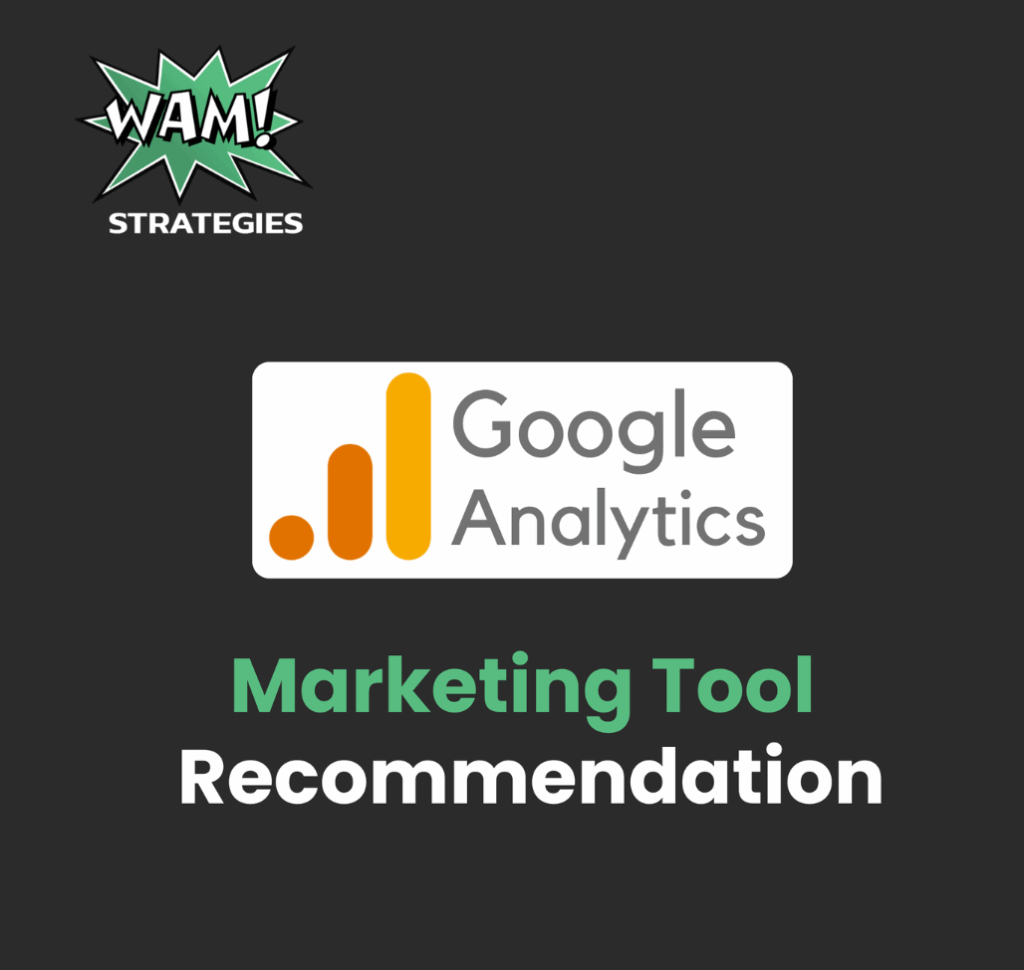Are you truly tracking your business growth—or just guessing?
In today’s data-driven landscape, intuition alone won’t cut it. Every click, scroll, and visit to your site tells a story—and Google Analytics helps you read it. Google Analytics for business growth is one of the most powerful (and free) tools small businesses can use to turn raw website data into real results. At WAM Strategies, we don’t just recommend smart tools—we guide you on how to use them to fuel real growth.
If you’re still wondering what is Google Analytics or if it’s right for your business, this blog will walk you through:
- Why businesses should embrace data analytics
- Key features of Google Analytics
- How it improves your SEO and marketing ROI
- Setup and best practices
Why You Need Google Analytics for Business Growth
Without data, you’re marketing blindfolded. Google Analytics delivers clear, actionable insights that show you:
- Where your traffic comes from
- What content drives engagement
- Which pages convert—and which push users away
Whether you’re running an eCommerce store or a local service business, data analytics gives you the edge to optimize performance and increase revenue.
Is Google Analytics free?
Yes—Google Analytics is free for most businesses and offers all the core tracking tools you need without paying a dime.
If you’re not using Google Analytics for business growth, you’re likely leaving valuable insights untapped.
Features & Benefits of Google Analytics
Google Analytics is more than just a traffic counter. Here’s what it can do for your business:
1. Real-Time Website Tracking
Monitor who is visiting your site right now, what pages they’re viewing, and how long they stay.
2. Traffic Source Breakdown
Understand whether your users come from Google, social media, paid ads, or referral links.
3. Behavior Flow
Visualize how users navigate your site—from landing to exit—so you can improve the user journey.
4. Conversion Tracking (Goals & Events)
Set up and track custom goals like purchases, newsletter signups, or contact form submissions.
5. Content Performance
Identify which blog posts or product pages get the most views and keep users engaged.
6. Audience Insights
Learn about your users’ geography, device, browser, and return rate—crucial for retargeting and personalization.
Step-by-Step Setup: Using Google Analytics for Business Growth
- Set Up a Google Analytics Account
Go to analytics.google.com, sign in with your Google account, and create a property for your website. - Add the Tracking Code to Your Website
Insert the provided code into your website’s <head> section or use tools like Google Tag Manager or plugins (for WordPress users). - Connect to Google Search Console
This integrates SEO data so you can see what keywords bring in the most clicks and impressions. - Set Up Goals & Events
Define what success means to you: form submissions, sales, clicks, etc., and track them under the “Goals” tab. - Build Custom Reports & Dashboards
Filter by user segment, device, campaign, and more for a fully customized view of your marketing performance.
Pro Tips for Getting the Most Out of Google Analytics
- Use UTM Parameters: Track the performance of specific campaigns (email, paid ads, social posts).
- Set up Alerts: Automatically get notified when there’s a sudden drop or spike in traffic.
- Pair with Google Data Studio: Create beautiful visual dashboards for easier decision-making.
- Explore Google Data Analytics Certification: Want to master the tool? Google offers a Google Data Analytics certification. As of 2024, the cost is around $49/month via Coursera and can be completed in under 6 months.
Google Analytics website traffic insights can help you unlock your growth potential. But having the tool isn’t enough—you need to understand what the data means and how to act on it.
At WAM Strategies, we help business owners not just install tracking tools, but build data-driven strategies that convert. If you’re still guessing what’s working, it’s time to stop.
Ready to Start Tracking What Matters?
Contact us to book your consultation today, and let’s build a smarter, data-backed marketing strategy.

